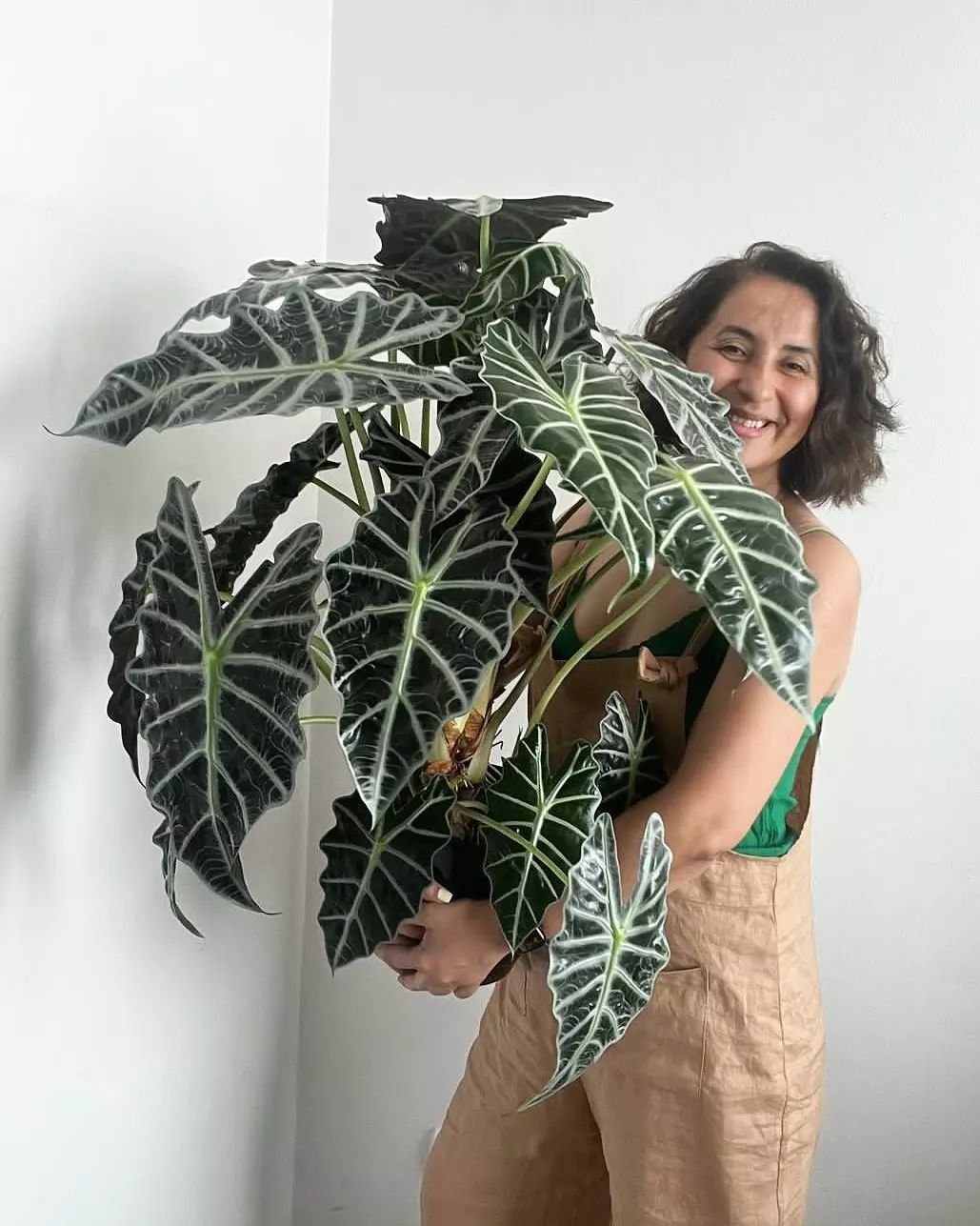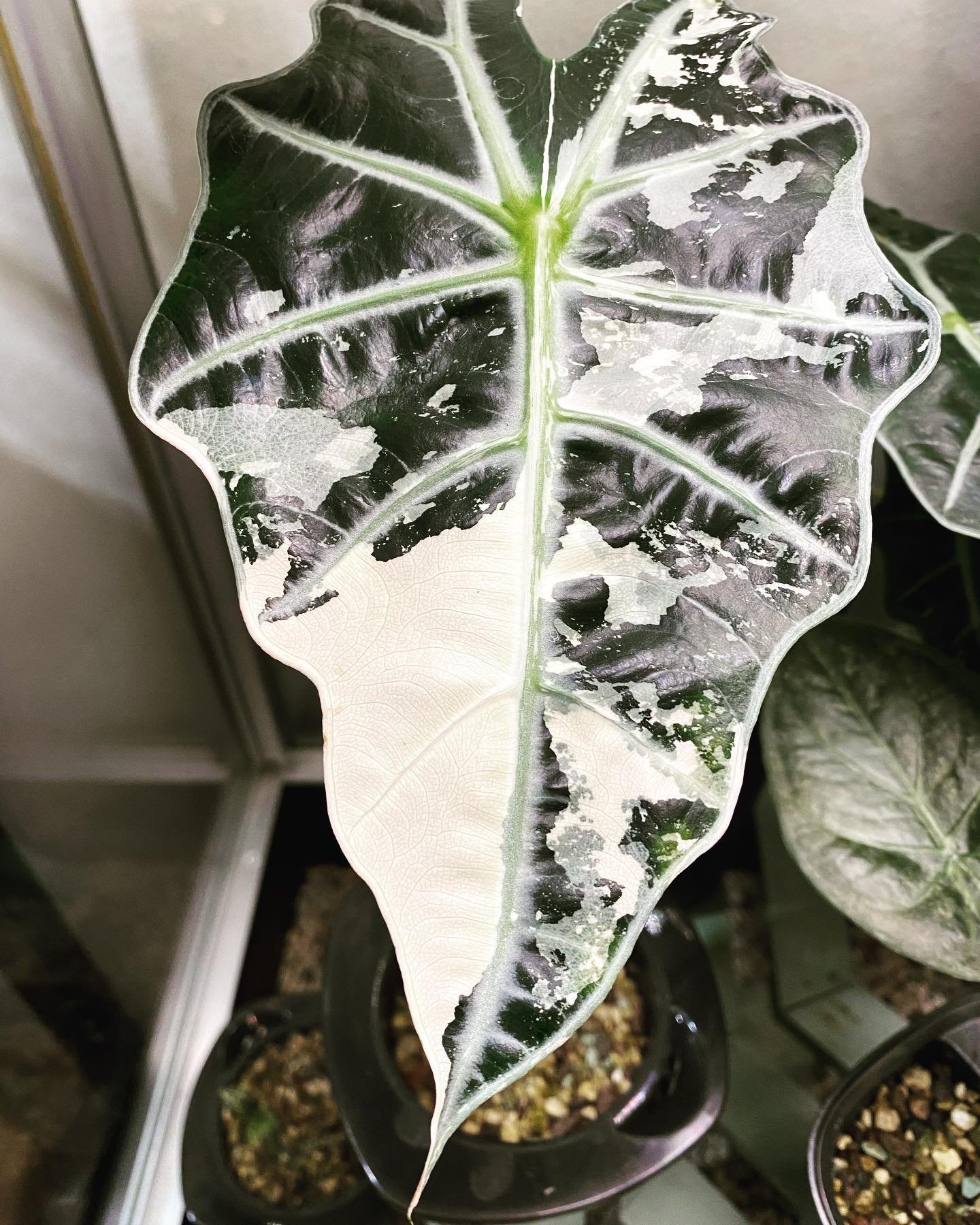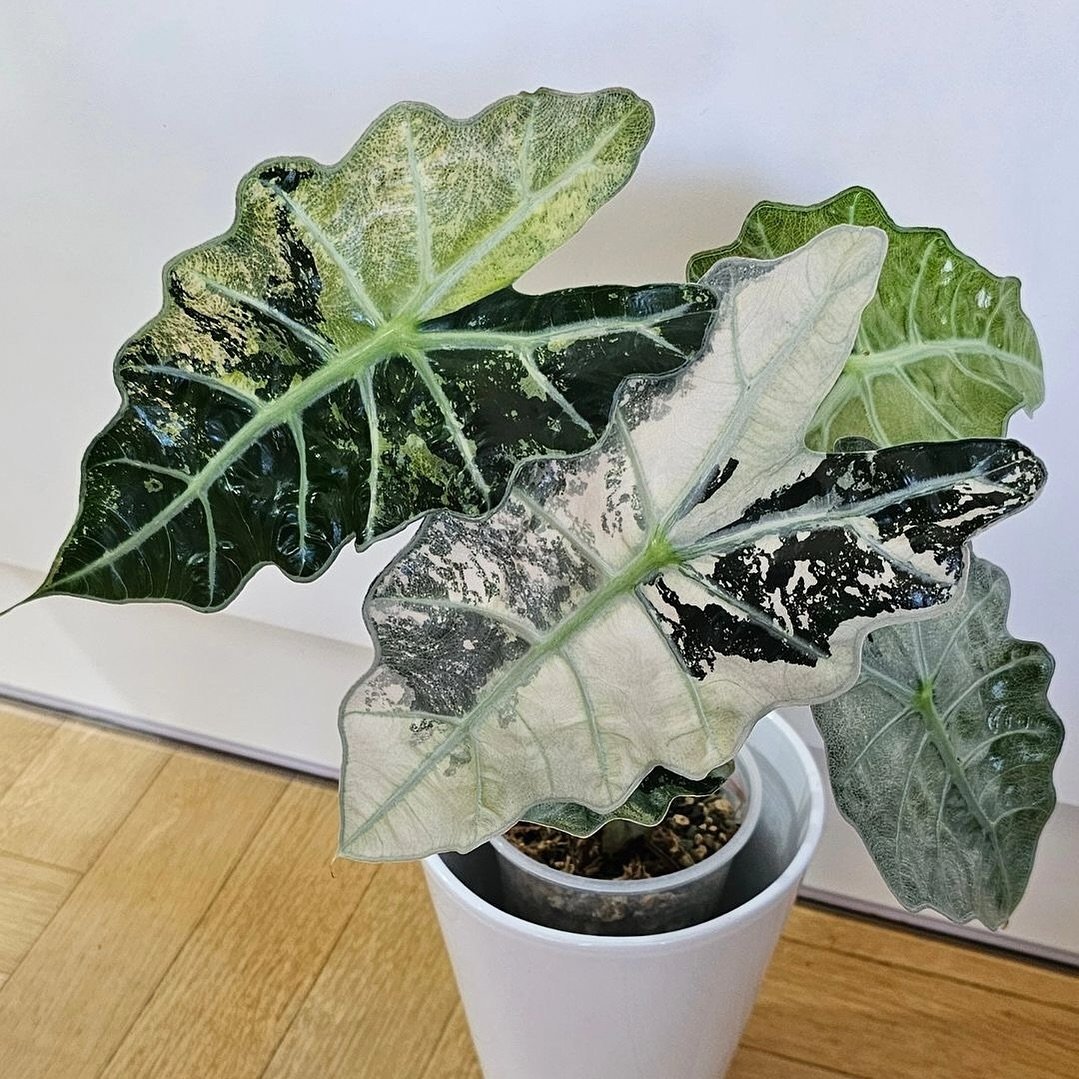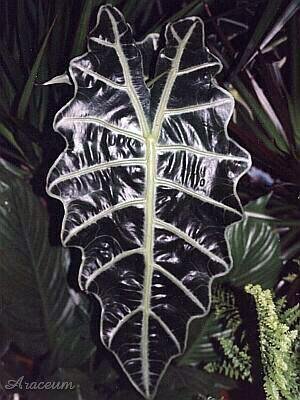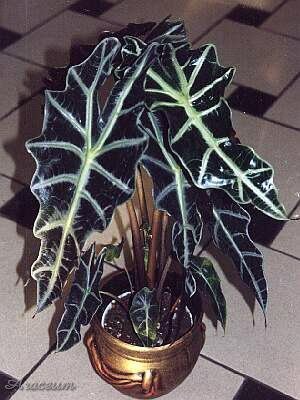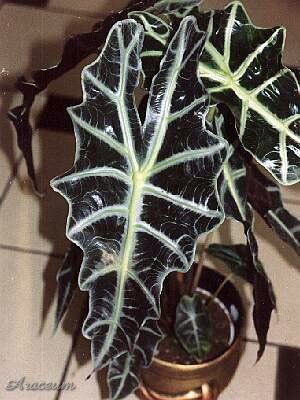ALOCASIA ‘POLLY’
Alocasia sanderiana x Alocasia longiloba ‘Watsoniana’
PARENTAGE: A. sanderiana x A. longiloba ‘Watsoniana’
SYNONYMS: Alocasia ‘Poly’
HYBRIDIZER: William Rotolante, Silver Krome Gardens - circa early 2000s
VARIEGATED FORMS: White (Sectoral, Mottled, Ghost), Pink
DESCRIPTION: Alocasia ‘Polly’ is a polyploid mutant discovered by Bill Rotolante in tissue culture liners of Alocasia ‘Amazonica’. While a more correct name would be Alocasia ‘Poly’, it is likely the higher familiarity of both buyers and sellers with the epithet ‘Polly’ is what made it stick
A polyploid mutant is a plant that has undergone a change in the number of chromosome sets in its cells during the tissue culture process. Polyploidy refers to a condition where the cells of an organism have more than two paired (homologous) sets of chromosomes. Most species are diploid – they have two sets of chromosomes, one from each parent. However, a polyploid has multiple sets of chromosomes, which can occur naturally or be induced artificially.
In tissue culture, plants are propagated using small pieces of plant tissue that are placed in a nutrient-rich, sterile environment to regenerate into new plants. During this process, the cells can sometimes undergo changes in their chromosome number due to the stress of the culture conditions or the effects of certain chemicals used to induce growth. This can lead to the formation of polyploid cells, which can result in a whole plant that is polyploid.
Polyploids can exhibit various differences from their diploid counterparts, such as larger size, increased vigor, and sometimes altered growth habits or flower characteristics. These changes are due to the increased amount of genetic material and gene expression and are often seen as beneficial and sometimes deliberately created These traits are often stable and heritable, meaning they can be passed on to the next generation of plants, which is can be valuable for plant breeders.
The original cross has been one of the most prolific in the genus Alocasia, with some of its “cousins” being more famously known than the others:
Alocasia ‘Amazonica’ by Salvadore Mauro of Amazon Nursery
Alocasia ‘Balloon Heart’ - South Korea
Alocasia ‘Mark Campbell’ by David Fell of Hawaiian Sunshine Nursery
Alocasia ‘Mortefontanensis’ by Édouard-François André
Alocasia ‘Purpley’ by Bill Rotolante of Silver Krome Gardens
Alocasia ‘Venom’ by Mason Lee of Mason Plants
Given the high variability of what literature labeled as Alocasia longiloba it is not surprising that the results of this cross by multiple hybridizers have produced such different hybrids. One can group Alocasia ‘Jean Merkel’ and Alocasia ‘Mark Campbell’ together, while Alocasia ‘Amazonica’, Alocasia ‘Mortefontanesis’ and Alocasia ‘Purpley’ are also closely related.
HYBRIDS: Alocasia ‘Morocco’ (Alocasia ‘Aurora’ x Alocasia ‘Polly’)
HYBRID DUPES:
Sellers and buyers often confuse Alocasia ‘Polly’ with Alocasia ‘Amazonica’. The former has much more defined venation, pronounced scalopping, a thicker leaf, and has a more oval leaf shape, whereas Alocasia ‘Amazonica’ has distinct V-shaped leaves
Photo by @salchiplantas_


